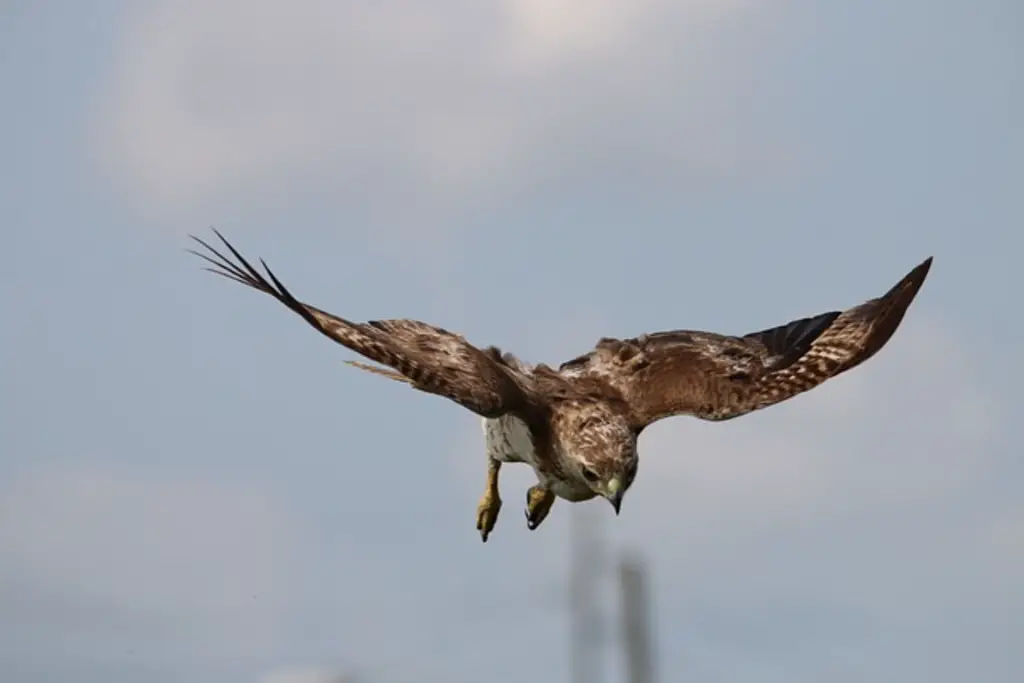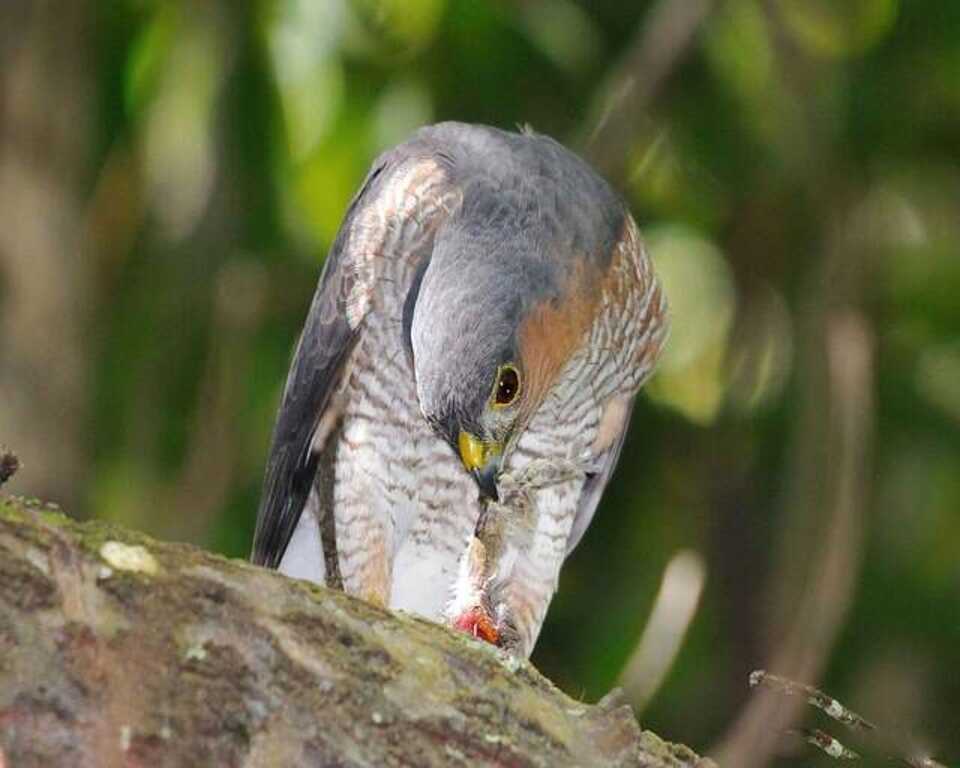You might wonder, do hawks eat foxes? The short answer is no. Hawks typically prey on smaller animals like rodents, birds, and reptiles. While they are powerful hunters, their size and hunting techniques don’t allow them to tackle larger animals like foxes. In this article, we’ll dive into what hawks typically eat and how their hunting habits work.
Table of Contents
The Diverse Diet of Hawks
Hawks are renowned for their impressive hunting skills and adaptable dietary habits. These raptors have evolved to thrive in various ecosystems, from dense forests to open grasslands. Their diet is remarkably diverse, encompassing a wide range of prey items that may surprise many observers.
Small Mammals: The Staple of a Hawk’s Diet
Small mammals form the cornerstone of most hawk species’ diets. These agile predators have perfected the art of capturing swift-moving prey, using their sharp talons and keen eyesight to snatch up unsuspecting victims. Common targets include:
Hawks have developed specialized hunting techniques to capture these elusive creatures, often employing a combination of stealth, speed, and precision to secure their meals.
Avian Prey: Birds in the Crosshairs
While many people associate hawks primarily with hunting ground-dwelling animals, birds actually make up a significant portion of their diet. Hawks are skilled aerial hunters, capable of pursuing and capturing other birds in mid-flight. Some common avian prey include:
The ability to hunt other birds gives hawks a competitive edge in environments where ground-based prey may be scarce or difficult to access.
Reptiles and Amphibians: Cold-Blooded Snacks
Hawks don’t limit themselves to warm-blooded prey. Many species have been observed hunting and consuming reptiles and amphibians, particularly in warmer climates or during certain seasons. These prey items can include:
The inclusion of these cold-blooded creatures in their diet showcases the adaptability of hawks as predators.
Insects: Tiny but Nutritious Morsels
While it may seem surprising, insects play a role in the diet of many hawk species, especially smaller varieties or juveniles. Hawks have been known to catch and eat:
- Grasshoppers and crickets
- Dragonflies and butterflies
- Beetles and caterpillars
- Flying ants and termites during swarms
Insects provide a readily available source of protein and can be particularly important for young hawks developing their hunting skills.
Can Hawks Take Down Foxes?
Now that we’ve explored the typical diet of hawks, let’s address the central question: do hawks eat foxes? The answer is more nuanced than a simple yes or no, and largely depends on the size of both the hawk and the fox in question.
The David and Goliath Scenario
Most hawk species are simply too small to consider adult foxes as potential prey. The average Red-tailed Hawk, for example, weighs between 2 to 4 pounds, while an adult red fox can weigh anywhere from 8 to 15 pounds. This significant size difference makes it unlikely for a hawk to successfully hunt and kill a full-grown fox.
Vulnerable Young: A Different Story
While adult foxes are generally safe from hawk predation, the same cannot always be said for fox kits or very young foxes. Some larger hawk species, such as the ferruginous hawk or the golden eagle (which is closely related to hawks), have been known to occasionally target young or weak foxes if the opportunity presents itself.
Rare Occurrences and Exceptional Circumstances
It’s important to note that while instances of hawks preying on foxes do occur, they are extremely rare and often the result of unusual circumstances. Factors that might lead to such an event include:
- Severe food scarcity in the hawk’s usual prey base
- A particularly large and powerful hawk encountering a small or weakened fox
- Unusual environmental conditions that give the hawk a significant advantage
These scenarios are the exception rather than the rule, and should not be considered typical behavior for hawks.
The Relationship Between Hawks and Foxes
Rather than a straightforward predator-prey dynamic, the relationship between hawks and foxes is multifaceted and varies depending on the specific ecosystem and circumstances.
Competitors in the Food Chain
In many habitats, hawks and foxes are more likely to be competitors than predator and prey. Both species often target similar food sources, particularly small mammals and birds. This competition can lead to interesting interactions and behavioral adaptations:
- Hawks may adjust their hunting times to avoid peak fox activity periods
- Foxes might become more nocturnal in areas with high hawk populations
- Both predators may develop strategies to steal or scavenge prey from each other
Understanding this competitive relationship helps paint a more accurate picture of how these animals coexist in nature.
Interestingly, hawks and foxes often face similar threats from larger predators. This shared vulnerability can sometimes result in unexpected alliances or behaviors:
- Both species may benefit from each other’s alarm calls when larger predators are present
- Hawks and foxes might inadvertently provide early warning systems for one another
- In some cases, the presence of one predator may create hunting opportunities for the other by flushing out prey
These dynamics highlight the intricate web of relationships that exist within ecosystems.
Habitat Overlap and Adaptation
The degree of interaction between hawks and foxes can vary greatly depending on the specific habitat and how each species has adapted to it:
- In forested areas, hawks may focus more on avian prey, while foxes hunt on the ground
- Open grasslands might see more direct competition as both predators target similar prey
- Urban and suburban environments can lead to unique adaptations and interactions as both species learn to coexist with humans
The ability of both hawks and foxes to adapt to various habitats contributes to the complexity of their relationship.
The Role of Hawks and Foxes in Nature
Understanding the relationship between hawks and foxes goes beyond mere curiosity; it provides valuable insights into the broader ecological roles these predators play in their environments.
Population Control and Ecosystem Balance
Both hawks and foxes serve as important regulators of prey populations:
- Hawks help control rodent and small bird populations, preventing overgrazing and maintaining plant diversity
- Foxes play a similar role with ground-dwelling prey, also helping to control insect populations
- Together, these predators contribute to a balanced ecosystem by preventing any single prey species from becoming too numerous
This natural population control helps maintain biodiversity and ecosystem health.
Seed Dispersal and Vegetation Impact
While not directly related to their predatory behavior, both hawks and foxes can influence plant life in their habitats:
- Hawks may inadvertently disperse seeds through the prey they consume and later regurgitate
- Foxes are known to eat fruits and berries, dispersing seeds through their droppings
- The hunting behavior of both predators can create small disturbances that allow for new plant growth
These indirect effects on vegetation highlight the far-reaching impact of predators in an ecosystem.
Indicator Species for Environmental Health
The presence and behavior of hawks and foxes can serve as indicators of overall ecosystem health:
- Changes in hawk or fox populations may signal shifts in prey availability or habitat quality
- The diversity of prey items in their diets can reflect the biodiversity of an area
- Observing interactions between these predators and their environment can provide valuable data for conservation efforts
Monitoring these species can offer insights into broader environmental trends and challenges.
Comparing Hawks and Foxes: Predatory Adaptations
To better understand why hawks rarely prey on foxes, it’s helpful to compare the unique adaptations that make each species a successful predator in its own right.
| Adaptation | Hawks | Foxes |
|---|---|---|
| Vision | Exceptional eyesight, up to 8 times sharper than humans | Good night vision, adapted for low-light hunting |
| Hunting Style | Aerial attacks, diving from above | Ground-based stalking and pouncing |
| Primary Prey | Small mammals, birds, reptiles | Small mammals, birds, insects, fruits |
| Habitat | Various, from forests to open plains | Adaptable, including urban areas |
| Activity Period | Primarily diurnal (day-active) | Often crepuscular or nocturnal |
| Physical Weapons | Sharp talons and hooked beak | Sharp teeth and claws |
| Hunting Range | Large territories, covered by flight | Smaller territories, covered on foot |
This comparison illustrates how hawks and foxes have evolved to occupy different niches within their shared ecosystems, reducing direct competition and the likelihood of predation between the two species.
Conclusion
In conclusion, while hawks and foxes rarely engage in direct predator-prey relationships, their interactions form a fascinating part of the natural world. As we continue to study and appreciate these magnificent creatures, we gain a deeper understanding of the delicate balance that exists in our ecosystems.
The next time you spot a hawk soaring overhead or catch a glimpse of a fox darting through the underbrush, take a moment to reflect on the complex web of life they represent and the important roles they play in maintaining the health and diversity of our natural environments.
Related Post: Can A Hawk Pick Up A Dog? (What You Need To Know)




